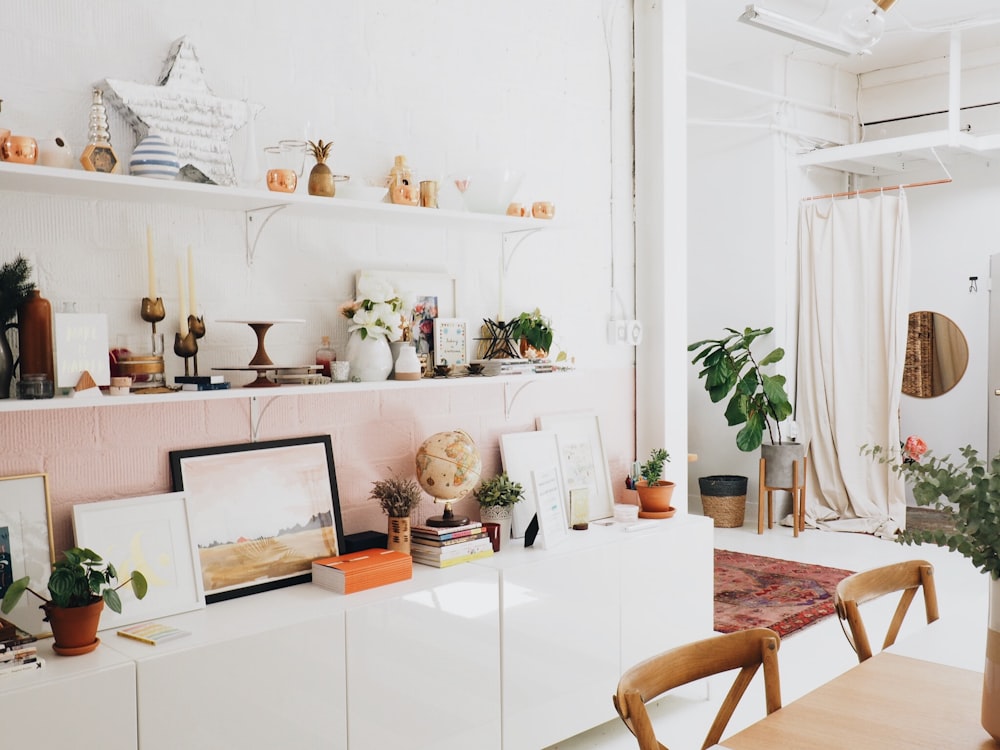General Articles
The Important Dimensions of Data Recovery from Cloud Storage
In today’s digital age, cloud storage has become a popular solution for storing data. Services like Google Drive, Dropbox, and iCloud offer a convenient way to keep your files safe and accessible from anywhere. But what happens if you accidentally delete something or experience a data loss issue? Don’t worry—data recovery from cloud storage is often possible.
Drive recovery services can be crucial when data recovery from cloud storage fails or is not possible, providing an alternative solution to retrieve lost files. Let’s explore the important dimensions of data recovery from cloud storage to help you solve any issues you might encounter.
- Understanding Cloud Storage
Before diving into recovery, it’s essential to understand what cloud storage is. Cloud storage involves storing your data on remote servers managed by a cloud service provider. This means your files are not just on your device but also backed up online, offering an extra layer of protection against data loss.
- Accidental Deletion
One of the most common reasons people need data recovery from cloud storage is accidental deletion. Here’s how you can recover deleted files from major cloud services:
Google Drive:
- Check the Trash: Deleted files usually go to the Trash folder and stay there for 30 days before being permanently deleted.
- Restore from Trash: Go to the Trash folder, select the files you want to restore, and click the restore button.
Dropbox:
- Check Deleted Files: Dropbox keeps deleted files for 30 days (or longer if you have a Dropbox Business account).
- Restore Files: Go to the Deleted files page, select the files you want to restore, and click the restore button.
iCloud:
- Check Recently Deleted: iCloud stores deleted files in the Recently Deleted folder for 30 days.
- Restore Files: Navigate to the Recently Deleted folder, select the files you want to restore, and click recover.
- Version History
Many cloud storage services offer a version history feature. This means they save multiple versions of your files, so you can revert to an earlier version if needed. Here’s how to use it:
Google Drive:
- Access Version History: Right-click on a file and select “Manage versions” to see and restore previous versions.
Dropbox:
- View Version History: Right-click on a file and select “Version history” to view and restore earlier versions.
iCloud:
- Restore Versions: iCloud doesn’t have a direct version history feature, but you can use apps like Pages or Numbers that save different versions automatically.
- Data Loss Due to Sync Issues
Sometimes, data loss can occur due to synchronization issues between your device and the cloud. If this happens, you can usually resolve it by re-syncing your device:
Re-syncing Steps:
- Disconnect and Reconnect: Disconnect your account from the cloud service on your device, then reconnect it to force a re-sync.
- Check Network Connection: Ensure you have a stable internet connection, as poor connectivity can cause sync problems.
- Third-Party Recovery Tools
If the built-in recovery options don’t work, you can use third-party recovery tools designed for cloud storage. These tools can help recover lost files and resolve …
Reem Island UAE
Reem Island UAE, a stunning natural island located off the northeastern coast of Abu Dhabi, is a rapidly developing urban paradise. Known for its luxurious lifestyle, modern infrastructure, and prime location, Reem Island has become one of the UAE’s most sought-after residential and commercial destinations.

A Brief Overview of Reem Island
Reem Island, also known as Al Reem Island, is a mixed-purpose community offering a blend of residential, commercial, and retail properties. The island is connected to the mainland of Abu Dhabi through several bridges, making it easily accessible. The development of Reem Island began in the early 2000s, and it has since grown into a vibrant community, attracting residents and investors alike.
Properties on Reem Island
Reem Island offers a diverse range of properties, from high-rise apartments to luxurious villas, catering to various tastes and preferences. The island is home to several renowned residential projects, each designed to provide an exceptional living experience.
The Bridges by Aldar
One of the standout residential developments on Reem Island is The Bridges by Aldar. This contemporary urban project features six mid-rise towers with a total of 1,272 apartments. The Bridges offers a mix of studio, one, two, and three-bedroom apartments, each meticulously designed to provide comfort and elegance.
Key Features of The Bridges:
- Modern Design: The Bridges boasts a sleek and modern architectural design, with each apartment offering spacious layouts and high-quality finishes.
- Amenities: Residents of The Bridges can enjoy a range of amenities, including swimming pools, gyms, children’s play areas, and landscaped gardens.
- Convenient Location: Situated in the heart of Reem Island, The Bridges provides easy access to retail outlets, dining options, and recreational facilities. Its strategic location ensures that residents are never far from the vibrant life of Abu Dhabi.
- Community Living: The development promotes a sense of community with its well-planned public spaces and social areas, encouraging interactions among residents.
Why Choose Reem Island?
Living on Reem Island comes with numerous advantages, making it an attractive choice for both expatriates and locals. Here are some compelling reasons to consider Reem Island as your next home:
- Prime Location: Reem Island’s proximity to Abu Dhabi’s central business district and key landmarks makes it a convenient location for professionals and families. The island is just a short drive from major attractions like the Abu Dhabi Mall, Corniche Beach, and Saadiyat Island.
- Luxurious Lifestyle: Reem Island is synonymous with luxury. The island’s residential properties are equipped with world-class amenities, offering a lifestyle of comfort and convenience. The presence of upscale retail outlets, fine dining restaurants, and recreational facilities further enhances the living experience.
- Scenic Views: Many properties on Reem Island offer breathtaking views of the Arabian Gulf and Abu Dhabi’s skyline. The island’s waterfront location ensures that residents can enjoy stunning vistas and a tranquil environment.
- Vibrant Community: Reem Island is home to a diverse and vibrant community. The island hosts various cultural and social events, fostering a sense of belonging among residents. Its well-maintained public spaces, parks, and promenades provide ample
Transform Your Bedroom Stunning Interior Design Ideas
Subheading: Maximizing Space and Functionality
Transforming your bedroom into a stunning sanctuary begins with maximizing both space and functionality. Consider incorporating clever storage solutions such as built-in wardrobes, under-bed drawers, and floating shelves to keep clutter at bay and create a sense of openness. Choose furniture pieces that serve dual purposes, such as a storage ottoman that doubles as seating or a bedside table with built-in drawers. By optimizing every inch of space, you can create a bedroom that is both beautiful and practical.
Subheading: Embracing Personal Style
Your bedroom should be a reflection of your personal style and taste, serving as a retreat from the outside world where you can truly be yourself. When designing your bedroom, don’t be afraid to let your personality shine through in the decor. Whether you prefer minimalist elegance, cozy cottage charm, or bold and eclectic designs, infuse the space with elements that speak to you. From color palettes and patterns to furniture and accessories, make choices that resonate with your unique aesthetic sensibilities.
Subheading: Creating a Relaxing Atmosphere
At the heart of any stunning bedroom design is a focus on creating a relaxing atmosphere conducive to rest and rejuvenation. Choose calming color schemes such as soft neutrals, cool blues, or warm earth tones to promote a sense of tranquility. Incorporate plush bedding, sumptuous textiles, and ambient lighting to enhance comfort and create a cozy cocoon for unwinding at the end of the day. Consider adding elements of nature, such as indoor plants or natural materials, to bring a sense of serenity and connection to the outdoors into your bedroom space.
Subheading: Layering Textures and Patterns
To add visual interest and depth to your bedroom design, experiment with layering textures and patterns throughout the space. Mix and match different fabrics such as velvet, linen, and wool to create a tactile experience that invites touch and evokes warmth. Incorporate patterned throw pillows, area rugs, and curtains to introduce visual contrast and personality into the room. By playing with textures and patterns, you can add dimension and character to your bedroom while maintaining a cohesive overall aesthetic.
Subheading: Enhancing Mood with Lighting
Lighting plays a crucial role in setting the mood and ambiance of your bedroom. Incorporate a variety of lighting sources to create layers of illumination that can be adjusted to suit different activities and moods. Install overhead fixtures for general illumination, bedside lamps for task lighting, and accent lighting such as wall sconces or string lights for added ambiance. Consider installing dimmer switches or smart lighting systems that allow you to control the brightness and color temperature of your lights to create the perfect atmosphere for relaxation or romance.
Subheading: Incorporating Personal Touches
To truly transform your bedroom into a stunning sanctuary, don’t forget to incorporate personal touches that make the space feel uniquely yours. Display cherished photos, artwork, or mementos that hold sentimental value and bring a sense of joy and nostalgia to the room. Introduce elements that reflect your hobbies, interests, and
Condo Kitchen Renovation Cost Budgeting Tips and Estimates
Subheading: Introduction
Embarking on a condo kitchen renovation journey can be both exciting and daunting. However, before diving headfirst into the project, it’s crucial to have a clear understanding of the associated costs. In this guide, we’ll provide you with budgeting tips and estimates to help you navigate the financial aspects of your condo kitchen renovation.
Subheading: Assessing Your Needs and Goals
Before delving into the financial aspects, take some time to assess your needs and goals for the renovation. Are you aiming for a complete overhaul or just some minor updates? Understanding your objectives will guide your budgeting process and help you allocate funds more effectively.
Subheading: Setting a Realistic Budget
Setting a realistic budget is paramount when it comes to condo kitchen renovations. Consider factors such as the size of your kitchen, the scope of work, and the quality of materials you desire. Researching average renovation costs in your area can also provide valuable insights into what to expect.
Subheading: Understanding Cost Breakdowns
A crucial aspect of budgeting for a condo kitchen renovation is understanding the breakdown of costs. Expenses typically include materials (cabinets, countertops, flooring), labor, permits, and any additional fees for unforeseen circumstances. Breaking down these costs can help you prioritize and allocate your budget accordingly.
Subheading: Factoring in Hidden Costs
In addition to the obvious expenses, it’s essential to account for potential hidden costs that may arise during the renovation process. These can include structural issues, plumbing or electrical updates, or unexpected delays. Building a contingency fund into your budget can help mitigate the impact of these unforeseen expenses.
Subheading: DIY vs. Hiring Professionals
Another consideration when budgeting for a condo kitchen renovation is whether to tackle the project yourself or hire professionals. While a DIY approach may seem cost-effective initially, it can lead to costly mistakes if you lack the necessary skills and expertise. Hiring experienced contractors may incur higher upfront costs but can save you money in the long run by ensuring the job is done right the first time.
Subheading: Maximizing Your Budget
To make the most of your renovation budget, consider ways to cut costs without compromising on quality. Opting for pre-owned or discounted materials, shopping during sales, and negotiating with contractors can help lower expenses. Additionally, prioritizing essential upgrades and deferring non-urgent improvements can help stretch your budget further.
Subheading: Seeking Multiple Quotes
When hiring contractors for your condo kitchen renovation, don’t settle for the first quote you receive. Instead, seek multiple quotes from reputable professionals to ensure you’re getting a fair price. Be wary of unusually low bids, as they may indicate subpar workmanship or hidden costs down the line.
Subheading: Planning for Future Expenses
Finally, when budgeting for your condo kitchen renovation, consider the long-term costs associated with maintenance and upkeep. Investing in durable, high-quality materials may require a higher initial investment but can save you money on repairs and replacements in the future. Additionally, incorporating energy-efficient appliances and fixtures can lead to long-term savings on utility bills.
Elevate Your Space Stunning Flower Pot Decor Ideas
Transforming Your Home with Flower Pot Decor
Flower pots are not just containers for plants; they’re versatile decor elements that can elevate the ambiance of any space. With the right combination of plants, pots, and placement, you can create stunning visual displays that add charm, personality, and freshness to your home decor. Let’s explore some inspiring flower pot decor ideas to help you elevate your space.
Choosing the Right Plants: Aesthetic and Practical Considerations
When selecting plants for your flower pots, consider both aesthetic and practical factors. Choose plants that complement your home decor style and color scheme, whether you prefer lush greenery, colorful blooms, or a combination of both. Additionally, consider the lighting conditions and maintenance requirements of each plant to ensure they thrive in their new environment.
Mixing and Matching: Creating Visual Interest
One of the keys to successful flower pot decor is mixing and matching different plants, pots, and textures to create visual interest. Experiment with various combinations of tall, medium, and trailing plants to add depth and dimension to your displays. Pair vibrant flowering plants with sculptural foliage plants for a dynamic and eye-catching arrangement.
Playing with Scale: Adding Drama and Impact
Don’t be afraid to play with scale when designing your flower pot displays. Incorporating pots of different sizes and heights can add drama and impact to your decor, creating focal points and drawing the eye upward. Consider grouping pots of varying heights together to create dynamic vertical compositions that command attention.
Exploring Creative Containers: Beyond Traditional Pots
While traditional terra cotta and ceramic pots are timeless choices for flower pot decor, don’t overlook the potential of unconventional containers. Get creative and repurpose everyday items such as vintage crates, baskets, or even teacups and mugs to add a touch of whimsy and personality to your displays. Just ensure that your chosen containers have proper drainage to keep your plants healthy.
Embracing Seasonal Themes: Refreshing Your Decor
Another fun way to enhance your flower pot decor is to embrace seasonal themes and colors. Rotate seasonal plants and flowers throughout the year to reflect the changing seasons and add freshness and vitality to your home decor. In the spring, opt for pastel blooms and delicate foliage, while in the fall, choose warm hues and textured foliage to evoke the spirit of the season.
Creating Cohesive Arrangements: Harmonizing Your Decor
To create a cohesive look, consider harmonizing your flower pot decor with other elements of your home decor, such as furniture, textiles, and accessories. Choose pots and plants that complement the style, color palette, and overall aesthetic of your space, whether it’s contemporary, rustic, bohemian, or eclectic. This will help tie your flower pot displays into the broader design scheme of your home.
Experimenting with Placement: Maximizing Impact
Finally, don’t underestimate the power of strategic placement when it comes to flower pot decor. Experiment with different locations throughout your home, such as entryways, living rooms, dining areas, and outdoor patios, to maximize the impact of your displays. Consider
Renovation Revelation Total Home Overhaul Expenses
Understanding the Costs of a Total Home Overhaul
Renovating a home is often a thrilling yet daunting endeavor, especially when contemplating a total overhaul. From envisioning the perfect layout to selecting materials and hiring contractors, the process entails numerous decisions, each with its associated costs. In this article, we delve into the expenses involved in a total home renovation, shedding light on the various factors that influence the overall budget.
Assessing the Scope of Work
Before diving into the financial aspect, it’s crucial to understand the scope of the renovation project. A total home overhaul typically involves extensive changes, such as structural modifications, electrical and plumbing updates, and cosmetic enhancements. Assessing the scope allows homeowners to gauge the magnitude of the project and anticipate potential expenses accordingly.
Budget Allocation and Prioritization
One of the initial steps in planning a total home renovation is allocating a budget. Setting a realistic budget requires careful consideration of priorities and desired outcomes. Homeowners must decide which areas of the home require the most attention and allocate funds accordingly. Whether it’s focusing on the kitchen, bathrooms, or overall aesthetics, prioritization is key to managing expenses effectively.
Cost Breakdown: Materials vs. Labor
A significant portion of the renovation budget is allocated to materials and labor costs. Quality materials are essential for durability and aesthetics, but they often come with a price tag. Additionally, hiring skilled contractors or tradespeople contributes to labor expenses. Balancing material quality and labor costs is essential for staying within budget while achieving the desired results.
Unforeseen Expenses and Contingency Planning
Despite meticulous planning, unforeseen expenses can arise during a renovation project. Structural issues, hidden damages, or unexpected delays may necessitate additional spending. To mitigate the impact of unforeseen expenses, homeowners should allocate a contingency fund, typically around 10-20% of the total budget. Having a financial buffer ensures flexibility in addressing unexpected challenges without derailing the entire project.
Permitting and Regulatory Costs
Obtaining permits and complying with building regulations are essential steps in a home renovation project, and they come with associated costs. Permit fees vary depending on the scope of work and local regulations. It’s crucial for homeowners to factor these expenses into their budget and ensure compliance with all legal requirements to avoid fines or delays.
Cost-Saving Strategies
While a total home overhaul can be a significant investment, there are several strategies to reduce costs without compromising quality. Shopping around for competitive material prices, opting for energy-efficient upgrades to save on utility bills in the long run, and tackling certain tasks as DIY projects can all contribute to cost savings. Additionally, working with a reputable contractor who can provide cost-effective solutions and alternative options can help maximize the renovation budget.
Project Management and Timeline Considerations
Effective project management is essential for keeping renovation costs in check and ensuring timely completion. Establishing a realistic timeline and adhering to it can prevent delays that may inflate expenses. Clear communication between homeowners and contractors, regular progress updates, and proactive problem-solving are key components of
Tips for Managing Inventory in a Small Business
For any small business selling physical products, keeping inventory levels on point is crucial, yet challenging. Too much and you are stuck with cash tied up in unsold goods. Too little and you risk turning customers away with empty shelves. Striking that perfect balance requires careful planning and diligent monitoring right from the very start.
Forecasting Fundamentals
The first step is forecasting how much inventory you will likely need for your first few months or selling seasons. Underestimating leads to disappointing stock-outs, while overestimating creates excess you may struggle to store or sell. Look at industry benchmarks, analyze demand patterns, and have a solid marketing plan. But also build in a small buffer to allow for the unexpected.
For example, if industry data shows retailers like you typically sell 500 units in your first three months, you might order 550 to be safe. Or purchase a variety of products like wholesale sunglasses from a supplier like Olympic Eyewear in smaller starter quantities until real demand emerges.

Counting is Key
Once you have opened, perpetually knowing your exact inventory levels is non-negotiable. Manually counting stock is time-consuming and prone to costly errors. Implement a simple inventory tracking system that logs real-time stock levels as sales are made and new merchandise arrives. This provides an accurate, constantly updated count.
With automated tracking, you immediately see which items are running low versus becoming potential dead-stock. This allows proactive reordering, transferring between locations, or adjusting prices to clear excess before it’s too late. The time savings and mistake prevention alone make investing in inventory tracking software worthwhile.
Seasonal Cycles
For many small businesses, sales ebb and flow with the seasons and holidays. Having too little hot product for peak periods is the quickest way to disappoint customers and leave money on the table. But being stuck with piles of excess seasonal stock is equally undesirable and expensive.
The solution is precisely forecasting seasonal demands, ordering incrementally as needed, then marking down surplus at the season’s end to avoid carryover. Use historical data, monitor sell-through rates, and routinely adjust on-hand totals throughout each seasonal cycle. With experience, you will get better at nailing those peak stocking levels.
Minimizing Surprises
No matter how disciplined your inventory management is, surprises are inevitable. A freak weather event, unexpected supplier shortage, or shift in customer tastes can suddenly throw product levels out of whack. Having flexibility and backup plans is crucial.
One strategy is maintaining a list of pre-approved alternate vendors for securing replacement goods quickly. Another is negotiating favorable cancellation terms with suppliers for adjusting orders mid-stream.
Getting Back in Sync
If your inventory oversight was lacking and merchandise piles up, it’s crucial to get proactive. Liquidating excess stock should become the top priority before it bleeds you dry in storage fees, decreases in value over time, or opportunity costs from tied up capital.
Identify any dead stock that definitely won’t sell, bite the bullet, and sell it to a liquidator at a severe loss if needed. For …
Revitalize Your Home’s Exterior Top Renovation Ideas
Revitalize Your Home’s Exterior: Top Renovation Ideas
When it comes to renovating your home’s exterior, there’s a plethora of possibilities waiting to transform your property into a stunning masterpiece. Whether you’re looking to enhance curb appeal, increase property value, or simply update the look of your home, there are various renovation ideas that can breathe new life into your exterior spaces.
Elevate Your Home’s Curb Appeal
First impressions matter, and the exterior of your home is the first thing guests and potential buyers see. Enhancing your home’s curb appeal not only makes it more inviting but also increases its value. Consider simple yet impactful changes like repainting the front door, adding window boxes with colorful flowers, or installing outdoor lighting to highlight architectural features.
Transform Your Outdoor Living Spaces
Outdoor living spaces have become increasingly popular in recent years, and for a good reason. They provide an extension of your home’s living area and offer a perfect place for relaxation and entertainment. Renovate your outdoor spaces by adding a patio or deck, creating a cozy seating area with comfortable furniture, and incorporating landscaping elements such as trees, shrubs, and flowers to enhance the ambiance.
Modernize Your Home’s Exterior
Give your home a contemporary edge by modernizing its exterior. Replace outdated siding with sleek, low-maintenance materials like fiber cement or composite cladding. Upgrade your windows and doors to energy-efficient options that not only improve insulation but also add style and sophistication to your home. Consider incorporating modern design elements such as clean lines, minimalistic landscaping, and bold accents to create a sleek and stylish exterior.
Enhance Your Home’s Architectural Features
Highlight the unique architectural features of your home by accentuating them with thoughtful renovations. Install decorative trim or molding to add visual interest to your exterior walls. Upgrade your roof with architectural shingles or metal panels that complement the style of your home. Consider adding a pergola, trellis, or other architectural elements to create depth and dimension to your outdoor spaces.
Invest in Sustainable Upgrades
Make your home more eco-friendly by investing in sustainable upgrades for your exterior. Install solar panels to harness renewable energy and reduce your carbon footprint. Incorporate rainwater harvesting systems to conserve water and irrigate your landscaping. Choose permeable paving materials for driveways and walkways to reduce runoff and promote groundwater recharge. By embracing sustainable practices, you can not only save money on utility bills but also contribute to a healthier environment.
Create an Inviting Entryway
Your home’s entryway sets the tone for the rest of the property, so it’s essential to make it welcoming and inviting. Upgrade your front porch by adding seating, lighting, and decorative accents such as planters or outdoor rugs. Install a stylish front door with sidelights or transom windows to bring in natural light and enhance the architectural appeal. Consider adding a covered entry or portico to provide shelter from the elements and create a grand entrance to your home.
Maximize Outdoor Lighting
Outdoor lighting not only adds beauty and ambiance to
Ensure Healthy Growth with Proper House Plant Care

Mastering the Art of House Plant Care
Understanding Your Plants’ Needs
Successful house plant care begins with understanding the unique needs of each plant species. Different plants have varying requirements for sunlight, water, humidity, and soil conditions. Take the time to research and learn about the specific needs of your house plants to ensure they thrive in their indoor environment.
Choosing the Right Location
The placement of your house plants plays a significant role in their overall health and growth. Some plants thrive in bright, indirect sunlight, while others prefer low-light conditions. Consider the natural habitat of each plant when choosing a location in your home. Place sun-loving plants near windows and darker corners for low-light plants.
Proper Watering Techniques
Watering is perhaps the most critical aspect of house plant care. Overwatering can lead to root rot and other fungal diseases, while underwatering can cause dehydration and wilting. Develop a watering schedule based on your plants’ needs, taking into account factors such as humidity levels, season, and plant size. Always water thoroughly, allowing excess water to drain away.
Humidity Control
Many house plants, especially tropical varieties, thrive in high humidity environments. To increase humidity levels, place a tray filled with water and pebbles beneath your plants or use a humidifier. Misting your plants with water regularly can also help maintain optimal humidity levels, especially during the dry winter months.
Choosing the Right Soil
The type of soil you use can significantly impact the health and growth of your house plants. Choose a well-draining potting mix specifically formulated for indoor plants. Avoid using garden soil, as it may contain pests, diseases, or other contaminants. Consider adding organic matter such as compost or perlite to improve soil structure and fertility.
Fertilizing Properly
While soil provides essential nutrients for plants, they may require additional fertilization to thrive. Choose a balanced, water-soluble fertilizer formulated for indoor plants and follow the manufacturer’s instructions for application. Be cautious not to over-fertilize, as this can cause nutrient burn and other issues. Fertilize your plants during the growing season, typically spring and summer.
Pruning and Maintenance
Regular pruning and maintenance are essential for keeping your house plants healthy and attractive. Remove dead or yellowing leaves, spent flowers, and any other debris to prevent the spread of disease and pests. Prune your plants to encourage bushier growth and remove any leggy or overcrowded stems.
Pest and Disease Management
Despite your best efforts, house plants may still fall victim to pests and diseases. Inspect your plants regularly for signs of infestation, such as yellowing leaves, sticky residue, or unusual spots. Treat affected plants promptly with natural or chemical pesticides, following the instructions carefully. Quarantine infested plants to prevent the spread of pests to other plants.
Rotation and Repotting
Periodically rotating your house plants ensures they receive uniform sunlight and encourages balanced growth. Additionally, repotting your plants every year or two allows them to grow freely and replenishes nutrients in the soil. Choose pots that are slightly larger than the current
Mastering Sanitary Plumbing Essential Tips for Success
Understanding the Importance of Sanitary Plumbing
In the realm of home maintenance and improvement, few aspects are as crucial as sanitary plumbing. From ensuring clean water supply to efficient wastewater disposal, the integrity of a home’s plumbing system directly impacts the health, safety, and comfort of its occupants. Let’s delve into the significance of sanitary plumbing and explore essential considerations for homeowners.
Ensuring Clean Water Supply: The Foundation of Sanitary Plumbing
At the core of sanitary plumbing lies the provision of clean and potable water for various household needs. A well-designed plumbing system should guarantee a continuous supply of fresh water, free from contaminants and impurities. This involves proper installation of pipes, fixtures, and filtration systems to safeguard the health of inhabitants and prevent waterborne diseases.
Efficient Wastewater Disposal: Maintaining Hygiene and Sanitation
Equally important is the efficient disposal of wastewater generated from various household activities such as bathing, cooking, and cleaning. A robust sanitary plumbing system should facilitate the swift and hygienic removal of wastewater, preventing backups, leaks, and foul odors. Proper drainage, venting, and sewage disposal mechanisms are essential components of an effective plumbing infrastructure.
Preventing Plumbing Emergencies: The Importance of Regular Maintenance
To ensure the longevity and functionality of a sanitary plumbing system, regular maintenance is paramount. Periodic inspections, leak detection, and pipe cleaning can help identify potential issues before they escalate into costly emergencies. Addressing minor leaks, clogs, or corrosion promptly can prevent water damage, mold growth, and structural deterioration, preserving the integrity of the home.
Adhering to Building Codes and Regulations: Compliance Matters
When undertaking plumbing installations or renovations, adherence to building codes and regulations is non-negotiable. These standards are designed to safeguard public health, safety, and environmental sustainability by dictating minimum requirements for plumbing materials, configurations, and practices. Failure to comply with regulations can result in legal repercussions, fines, or even jeopardize insurance coverage.
Choosing Quality Materials and Fixtures: Investing in Durability
The durability and reliability of a plumbing system are heavily influenced by the quality of materials and fixtures used. Opting for high-grade pipes, fittings, and fixtures may entail a higher initial cost but can translate into long-term savings by minimizing repairs and replacements. Additionally, eco-friendly and water-efficient fixtures not only reduce utility bills but also contribute to environmental conservation efforts.
Embracing Sustainable Practices: Environmental Responsibility
In an era of increasing environmental awareness, sustainable plumbing practices have gained prominence. From water-saving appliances to rainwater harvesting systems, homeowners have a plethora of eco-friendly options at their disposal. Implementing sustainable plumbing solutions not only reduces water consumption and carbon footprint but also enhances the resale value of the property.
Seeking Professional Expertise: The Value of Professional Plumbing Services
While some plumbing tasks may be tackled by DIY enthusiasts, complex installations or repairs are best left to qualified professionals. Licensed plumbers possess the expertise, experience, and specialized tools necessary to handle intricate plumbing projects safely and efficiently. Entrusting plumbing work to professionals ensures compliance with regulations, mitigates risks, and guarantees quality craftsmanship.
Investing in Preventive Measures:







